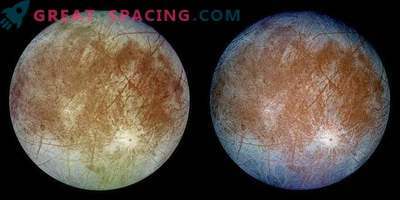
In 1995-2003 NASA's Galileo spacecraft performed several flights to Jupiter’s satellite Europe. Some data hinted at the existence of a liquid ocean beneath the icy surface of the moon. Scientists believe that microbial life or the remnants of early forms are capable of living in the ocean.
Scientists agree on the location of the search (under the ice shell of the planet, where water contacts the core and can save biochemical ingredients for life), but so far no one is sure how to get there. The ice layer is believed to be 2-30 km thick, which is a serious problem for in-depth studies.

Artistic vision of the drilling mechanism on the satellite of Jupiter Europe
In a recent study, scientists proposed the concept of creating a nuclear-equipped tunnel robot. He will be able to penetrate under the ice shell and get to the desired location along with the necessary package of tools for searching for life (real or extinct). While there is no exact description of how the robot will break through such a layer of ice, but the developers have already described the principle of research on the spot. The robot will examine the ice across the shell, as well as test the water at the ice-water interface, examining the lower part of the ice cover for the presence of microbial biofilms. The possibility of searching for liquid water “lakes” in an ice shell is also being considered. There are already two alleged designs of the bot: in a nuclear reactor and sources of radioactive heat (as for space flights).
Heat from both sources can be used to melt the ice shell. Connections will be provided by a chain of repeaters connected via fiber optic cables. NASA often sponsors conceptual research if it sees potential in the proposed technology. It is important for us to understand whether there is life outside the Earth. Europe seems to be a promising place to look.











































